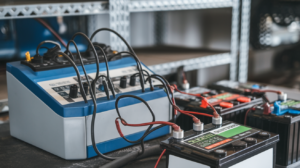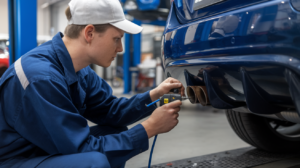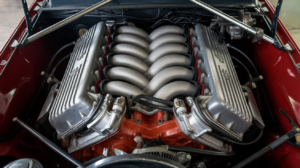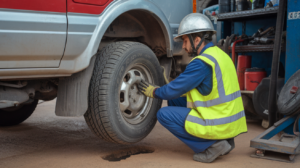Why do tires fail so often in Dubai’s heat, when you least expect it? You’re cruising down Sheikh Zayed Road, AC blasting, and suddenly that low-pressure light flashes. It is not just annoying; it is dangerous. That’s where TPMS tools step in. These aren’t luxury gadgets; they’re a must-have for everyday tyre inspection in the UAE. When the temperature hits 45°C, pressure inside your tires can shift fast. Without a tire pressure monitoring system, you’re basically driving blind. Whether you’re running a garage or just checking your own ride, having the right tyre pressure tools can make the difference between a smooth trip and a roadside nightmare.
What is TPMS & How Does It Work?
Ever seen that weird horseshoe-looking symbol light up on your dashboard? That’s your car trying to tell you something, and it’s coming from the TPMS, or Tire Pressure Monitoring System. If you’re driving in the UAE, this little system might be the only thing standing between you and a tire blowout in 50-degree weather. So what exactly does TPMS do? In simple terms, it keeps an eye on your tire pressure. The system either uses sensors inside the tire (direct TPMS) or works through the ABS system (indirect TPMS) to detect when pressure drops too low. Once that happens, it sends a signal to your dashboard, warning you before things get risky.
- Direct TPMS uses small sensors inside each tire valve. These measure actual air pressure in real time.
- Indirect TPMS relies on wheel speed sensors. If a tire is underinflated, it rotates differently, and that’s how the system catches it.
- Most cars in the UAE today use direct TPMS, since it’s more accurate and especially helpful in extreme heat.
- The system resets after a refill or tire change, using a TPMS tool to calibrate the readings.
Tyre inspection in the UAE is not complete without checking the TPMS status. Whether it’s a routine check-up or a sudden dashboard alert, the tire pressure monitoring system helps avoid uneven wear, bad fuel economy, and dangerous heat-related failures. For complete peace of mind, you can always book a professional car inspection in Dubai through our main site, where every detail is checked under local RTA standards. A functioning TPMS is more than just a sensor; it’s a safety net, especially in places like Dubai, where tire pressure changes fast and often.
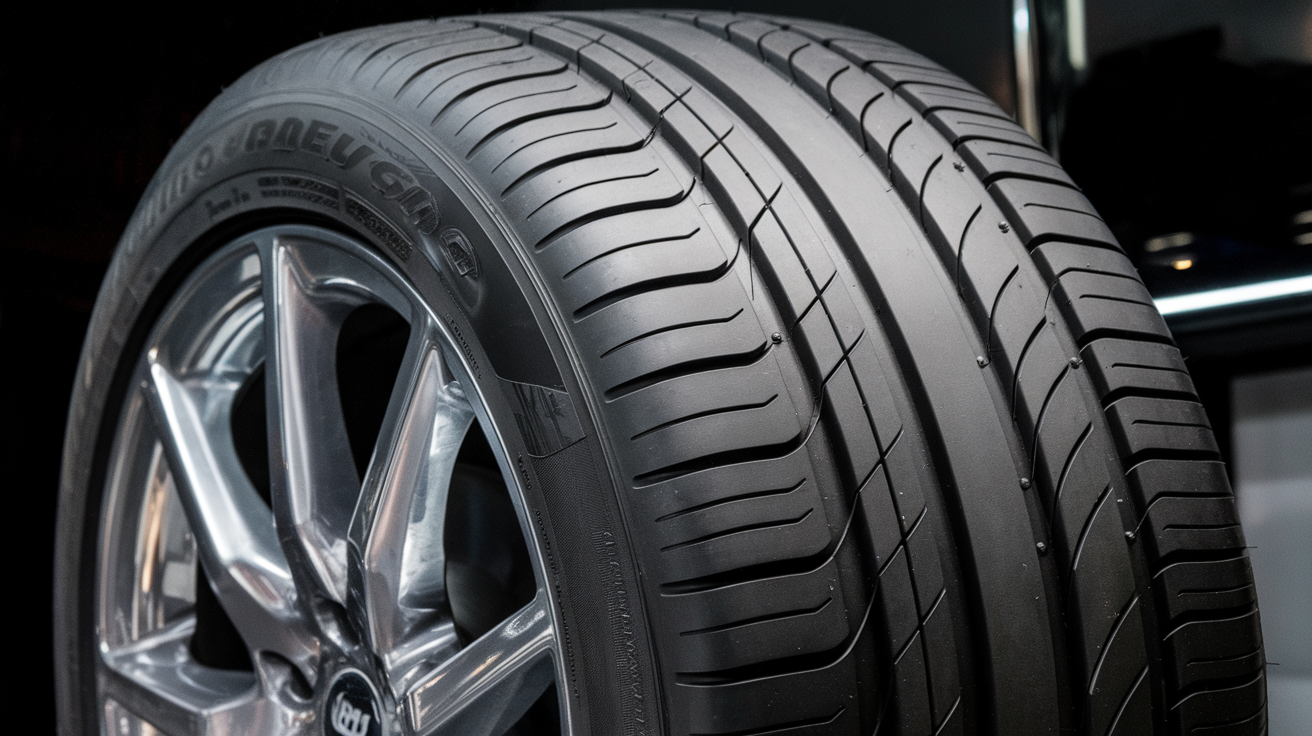
Why You Can’t Skip Tyre Pressure Monitoring in the UAE
If you’re living in the UAE, your tires are under pressure, literally. The heat here does not just warm things up; it messes with tyre pressure every single day. That’s why tyre pressure monitoring is not just important; it’s necessary for safety and fuel efficiency. Here’s what you really need to know:
- Tyre pressure rises by about 1 PSI for every 5°C increase in temperature. In Dubai’s summer, road temperatures can cross 70°C, which means your tyres can gain 5–6 PSI just by being parked in the sun.
- Overinflated tyres lose grip. If your tyre pressure tools don’t catch the increase, braking distance goes up and traction goes down, which is especially dangerous on hot, slick roads.
- Underinflated tyres wear faster. Just a 10% drop in pressure can reduce tire life by 15%, according to Goodyear. That’s your money going up in smoke, literally.
- Fuel efficiency drops. Tyres with low pressure create more rolling resistance. Studies show a 3–4% drop in mileage when pressure’s off; on UAE roads, that’s a lot of wasted petrol.
- TPMS tools help spot leaks early. A small puncture can turn into a roadside disaster in minutes. Tire pressure monitoring systems give early alerts before you’re stuck in the middle of E311.
- The RTA checks tyre pressure during inspections. It’s part of the checklist. A failed check can delay registration and even result in fines if you’re caught with visibly damaged or underinflated tyres. That’s why many drivers choose our car safety inspection service to ensure their tyres, brakes, and suspension meet Dubai’s safety requirements before renewal.
- Highway tyre blowouts are a real thing here. The UAE’s traffic stats show tyre bursts are one of the leading causes of highway accidents, especially in the summer months.
In short, regular tyre inspection in the UAE without a TPMS tool is like flying blind. Tyre pressure changes fast, and you’ll never see it coming until it is too late.
Choosing the Right TPMS Tool? Check These Must-Have Features First
Before you pick just any TPMS tool, think about what your car, or your garage, really needs. Not all tire pressure monitoring systems work the same way, and some are much better suited for UAE conditions than others. Whether you’re inspecting tyres in your driveway or running a full garage, the right features can save time, prevent mistakes, and avoid repeat issues. Here’s what to look for:
- Sensor Relearn & Programming
Without this, you can’t reprogram new sensors after a tyre change. Most modern vehicles, especially ones on Dubai roads, need relearn support to sync correctly with the ECU. - OBD2 Compatibility
TPMS tools with OBD2 connectivity let you plug directly into the car and access deeper data. This is crucial if you’re doing complete tyre inspections in the UAE, especially for newer models with complex ECU systems. - Real-Time Pressure Readings
Some tools just read static data. Others give live pressure readings from each tyre. If you’re serious about tyre inspection, real-time monitoring is worth it, especially in fluctuating desert heat. - Sensor Activation Without Deflation
Better TPMS tools activate sensors even without reducing tyre pressure. This saves time and avoids extra wear during routine checks. - Multilingual Interface & Regional Database
A tool that includes Middle Eastern car models and a multilingual menu (Arabic, English, etc.) makes it easier for workshops in the UAE to cover more vehicles without compatibility problems. - Wireless or Bluetooth Functionality
Many tyre pressure tools now connect to apps via Bluetooth. That means faster updates, better reporting, and easier data sharing, which is useful if you’re managing multiple vehicles. - Battery Backup or Rechargeable Options
Avoid tools that die mid-scan. Look for TPMS readers with long battery life or rechargeable options, especially if you’re doing inspections outdoors or on the go.
A TPMS tool isn’t just about getting a reading; it’s about getting the right reading, fast and reliably. If you’re curious about the technology behind these tools, we also covered it in detail in our blog on OBD inspection tools, which shows how diagnostics extend beyond just tyres. In the UAE’s harsh climate, these features make the difference between routine checks and real protection.
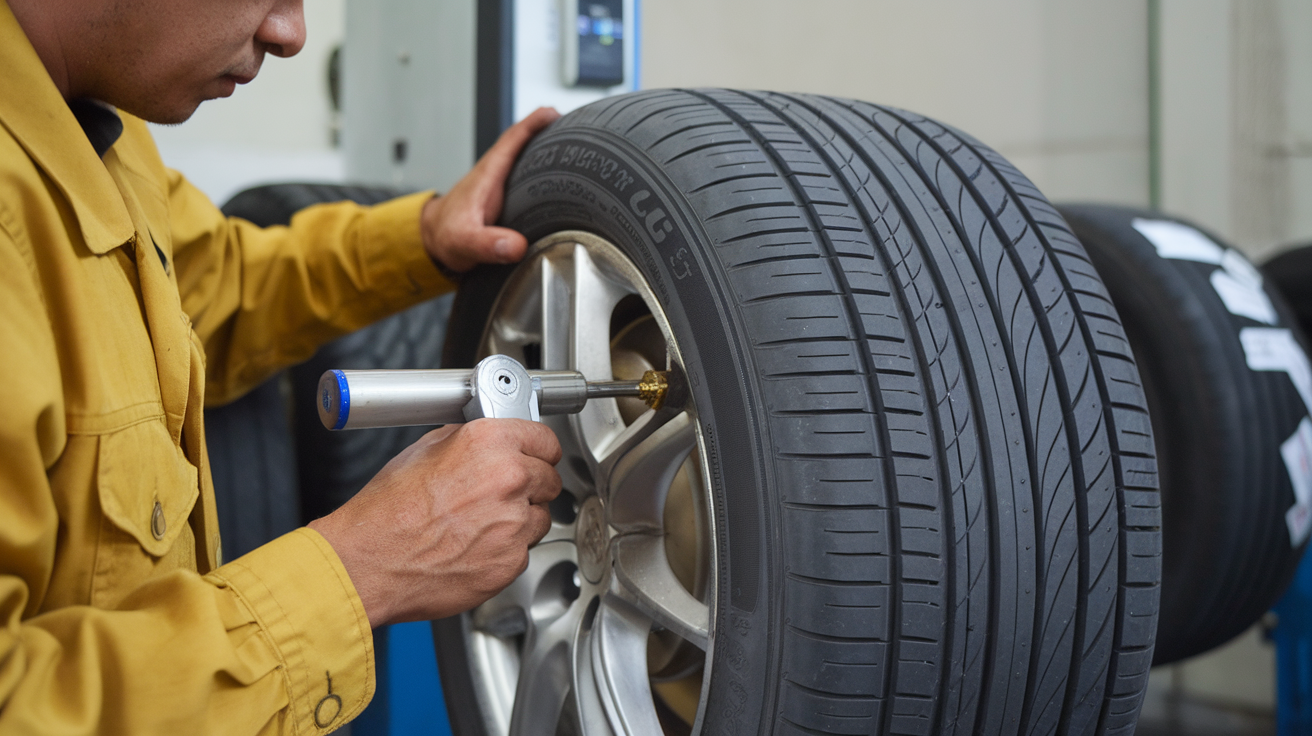
Top 5 TPMS Tools for Tyre Inspection in UAE That Actually Work
Not every TPMS tool is built for Dubai’s heat or ideal for real-world use of TPMS tools for tyre inspection across different car models. Some work great in mild climates, but over here? You need something tougher, smarter, and made for serious tyre inspection in UAE conditions. Whether you’re running a busy garage in Al Quoz or just looking to avoid a flat on Emirates Road, here are five TPMS tools for tyre inspection that are worth your time and money.
- Autel MaxiTPMS TS508:
Best for full-service workshops handling modern vehicles
- Reads & programs 98% of OE and aftermarket sensors
- Dual service modes: Quick and Advanced
- Supports sensor ID copy, manual entry, and OBDII relearn
- Includes most UAE-sold car brands preloaded
- Real-time pressure and temperature display
- Price range in UAE: AED 900–1,200
If you’re scanning multiple cars a day, this one’s fast and accurate. Many Dubai garages rely on it for its wide sensor coverage and strong OBD functions.
- ATEQ VT37 TPMS Reset Tool:
Great for mid-size workshops or mobile technicians
- Compact size with large color display
- Covers most GCC region vehicle models
- Step-by-step relearn procedures on screen
- Works with Schrader, Huf, and OE sensors
- Free software updates via USB
- Price range in UAE: AED 700–900
Perfect for quick tyre jobs and mobile inspections. It’s a favorite among garage techs in Sharjah and Ajman due to its ease of use.
- Launch X431 TSGUN
Add-on TPMS scanner for those already using Launch diagnostic tablets
- Wirelessly pairs with Launch X431 Pro or Elite
- Covers direct TPMS systems found in Japanese and German cars
- Sensor activation, programming, and data check
- Requires Launch tablet for full functionality
- Price for TSGUN only: AED 550–700
If your garage already uses Launch diagnostic tools, adding this makes your tyre pressure tools setup complete.
- Autel TS601 TPMS & Diagnostic Tool
All-in-one solution for deep diagnostics plus TPMS
- Reads and clears TPMS and OBD fault codes
- Real-time live data for all tyre sensors
- Supports relearn on most UAE-based European and American vehicles
- TPMS + full car diagnostics in one unit
- Price range in UAE: AED 1,400–1,600
Ideal for full car inspection in the UAE, not just tyres. Many full diagnostic garages in Abu Dhabi prefer this for its multi-system support.
- THINKCAR ThinkTPMS G1:
Budget-friendly tool for small garages or personal use
- Pairs with mobile app via Bluetooth
- Sensor activation, reading, and ID copy
- Supports BLE TPMS sensors
- Best for vehicles under 5 years old
- Price range in UAE: AED 350–500
If you’re doing your own tyre inspection or running a small fleet, this tool gives you what you need without overpaying.
Not all TPMS tools handle Dubai heat, RTA requirements, and imported car models equally. Whether you’re buying for your garage or for personal safety, picking one of these TMS tools for tyre inspection can make the job faster, cleaner, and way more accurate.
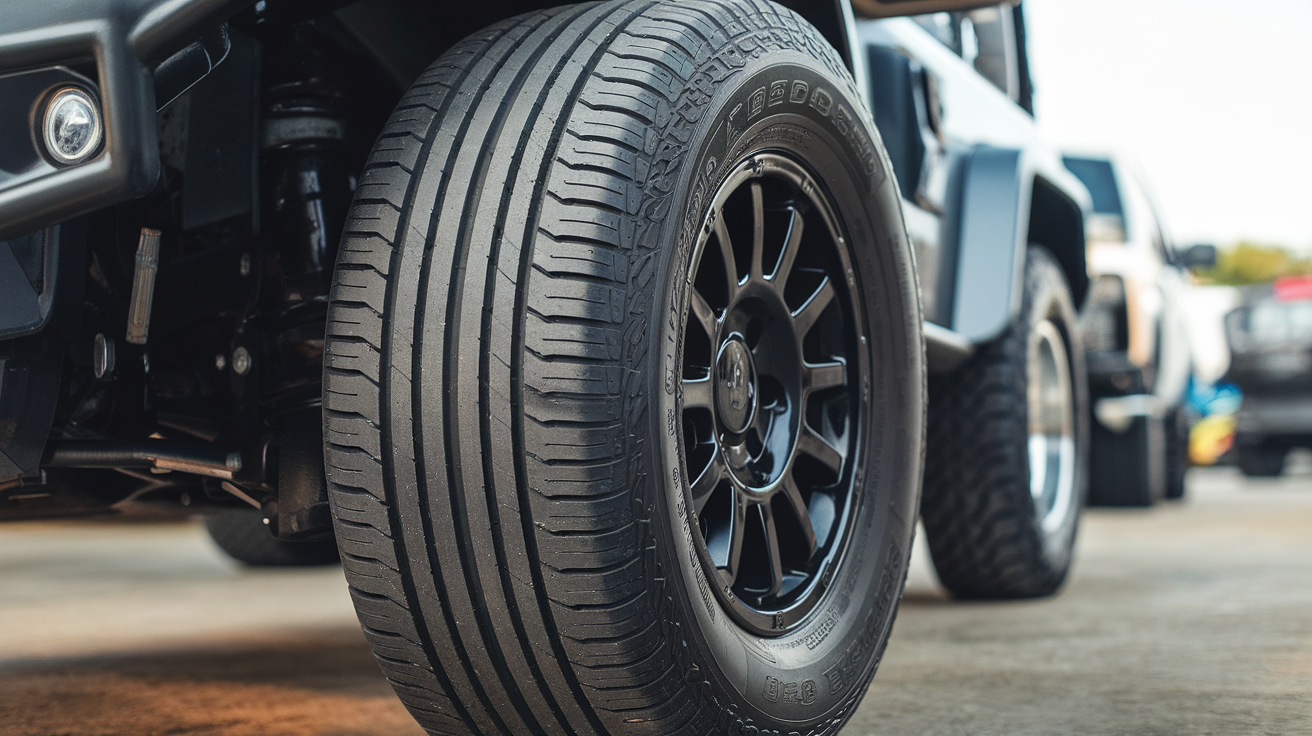
Why TPMS Tools Beat Manual Tyre Checks in UAE
Let’s say you’ve just parked your car in the open sun, typical midday Dubai heat, 47°C outside. You think your tyres are fine because they looked okay this morning. But what can you not see? The air inside has expanded. Pressure’s spiked. One pothole or highway stretch later, and boom. That’s where TPMS tools for tyre inspection prove their worth.
Manual Tyre Inspection
Still useful, but limited, especially in UAE conditions.
- Needs time & effort: You’ve got to check each tyre with a handheld pressure gauge. Most folks skip it altogether.
- No pressure alerts: You won’t know there’s a leak until the tyre looks visibly low or, worse, feels wobbly at 120 km/h.
- Not heat-sensitive: Manual checks don’t tell you how your pressure changes during the day, especially after a hot commute.
- Tyre wear gets missed: Unless you’re a tyre technician, small wear patterns or early bulges go unnoticed.
You topped up your tyre pressure last night at a petrol station. But this morning, your tyres are overinflated because the heat made the air inside expand. You wouldn’t know that with a manual check unless you redo everything.
TPMS Tools for Tyre Inspection
Smart, fast, and made for the UAE’s driving demands.
- Live monitoring: You get instant data on pressure and temperature while driving. No tools in hand. No guessing.
- Early warnings: If there’s a slow leak or pressure drop, the tool notifies you before it becomes a flat tyre.
- Accurate readings: Tools like the Autel TS508 or ATEQ VT37 can detect pressure shifts down to the decimal.
- Great for garages: Workshops in Dubai love TPMS tools for fast RTA compliance checks and real-time diagnostics.
- Essential for fleets: Delivery vans, taxis, company vehicles, and drivers can’t afford to check tyres manually all day.
A fleet vehicle reports a tyre warning on the TPMS scanner. The driver pulls in, gets the leak fixed, and avoids a full tyre failure on Emirates Road. That’s time, money, and safety saved, all in one scan.
Manual checks are better than nothing. But without TPMS tools for tyre inspection, you’re relying on guesswork in a city where tyres take a beating daily. To see how inspection technology is evolving further, check our feature on thermal imaging car inspection, which catches issues traditional checks miss. With TPMS tools for tyre inspection, you get ahead of tyre problems before they become accidents.And in the UAE, where tyre pressure plays games with heat? That’s not a luxury; it’s survival on wheels.
How to Use a TPMS Tool for Quick Tyre Inspection Without Wasting Time
Ever stood at the petrol station wondering if your tyres were low or if it was just your imagination? In Dubai, with pressure changing hourly thanks to the heat, there is no time for guessing. That’s where a good TPMS tool for tyre inspection comes in. And using it? Easier than most people think.Here’s exactly how to do it, without overcomplicating anything:
- Turn the ignition ON (engine OFF)
Your car’s electronics need to be powered for the TPMS tool to connect with the system. Most tools won’t scan properly unless the dashboard lights are on. Don’t start the engine; just turn the key or push-button to accessory mode. - Select the vehicle make and model
Good TPMS tools like Autel or ATEQ come with a preloaded database of GCC-specific cars. Make sure you select the exact model and year for proper sensor recognition. Skipping this step leads to reading errors, especially on newer UAE-imported vehicles. - Scan each tyre sensor
Place the TPMS tool near the tyre valve stem. Most tools will prompt you to start with the front-left tyre and go clockwise. A beep or green light confirms the sensor is detected. Tools using direct TPMS show pressure and temperature instantly. - Check for warning codes or sensor ID errors
If the tool flags a missing sensor ID or pressure imbalance, that’s your cue to inspect further. Some tools also show sensor battery life,useful for cars older than five years, where sensor failure is more common in UAE heat. - Use OBD2 connection for advanced reset
If you’ve just changed tyres or sensors, you might need to reset the system through the vehicle’s OBD port. Plug the tool in, follow the onscreen steps, and it will sync the new sensor IDs with your car’s ECU. - Save or print the report (optional)
Most workshop-grade tyre pressure tools give you the option to save a digital report. Handy for keeping inspection records, or sharing with customers if you’re in a garage setting.
Done right, a full tyre inspection in UAE with a TPMS tool takes less than five minutes,and it tells you way more than any manual check ever could. It is fast, reliable, and built for the kind of pressure UAE roads put on your car.
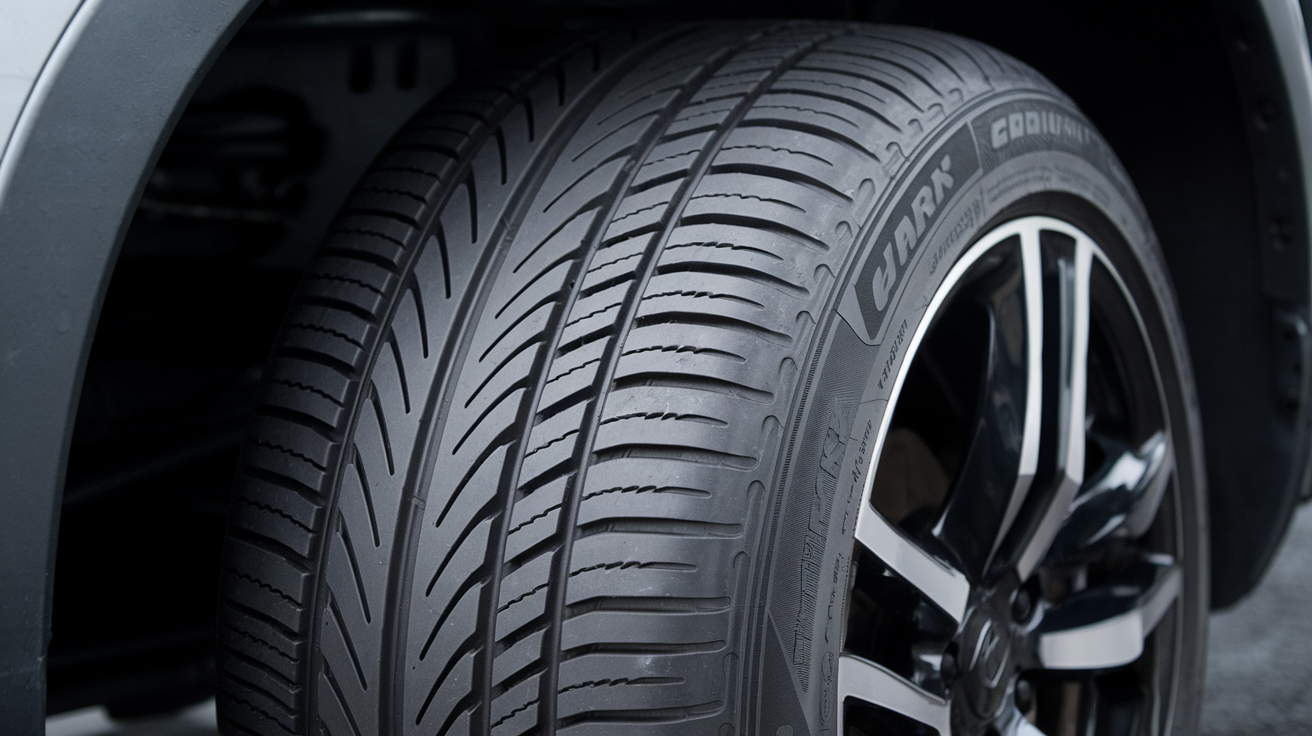
When TPMS Sensors Go Wrong in UAE Heat
Everything’s running smooth… until that warning light pops up. Again. If you’ve driven in the UAE long enough, you’ve probably seen TPMS issues happen out of nowhere,especially after tyre service or a long summer drive. And no, it’s not always your tyres. Sometimes it’s the sensors messing with you.Here’s what really goes wrong,and how the right TPMS tools for tyre inspection can catch it before things get worse:
- Sensor Batteries Die Faster in Heat
Most TPMS sensors use built-in lithium batteries that last 5–7 years under normal conditions. But in Dubai? That can drop to 3–4 years. Extreme heat kills battery life faster, and when they die, you lose the whole signal. Suddenly, your car thinks the tyre is flat when it’s perfectly fine. - Aftermarket Sensors Not Matching with Car ECU
Not all TPMS sensors are created equal. Some aftermarket ones don’t speak the same language as your car’s ECU. The result? Incomplete data, false warnings, or failure to detect pressure at all. That’s why you need to program or sync them using proper tyre pressure tools after every change. - Incorrect Sensor Relearn After Tyre Rotation
Rotated your tyres but didn’t relearn the sensor positions? Your TPMS might tell you the rear left tyre is low when it’s actually the front right. It happens more often than people think, and it’s dangerous if you act on the wrong info. A proper TPMS tool for tyre inspection solves this in one scan. - Interference from Other Electronic Systems
In areas with heavy signal overlap, like near airports or when using certain car electronics, your TPMS sensor signal might get blocked or misread. It’s rare, but it happens. Resetting the system or rescanning with a tool usually clears the issue. - Faulty Sensor Install After Tyre Service
Some garages reuse old sensors or don’t tighten them correctly. That can cause slow leaks or bad readings. If your warning light came on right after tyre work, it’s worth scanning the sensors and checking for installation issues.
Having a working tire pressure monitoring system isn’t just about catching flats. It’s about avoiding all these sensor headaches that waste your time and ruin your drive. With the right TPMS tools for tyre inspection, you can check if it’s a real issue,or just bad sensor drama trying to ruin your day.
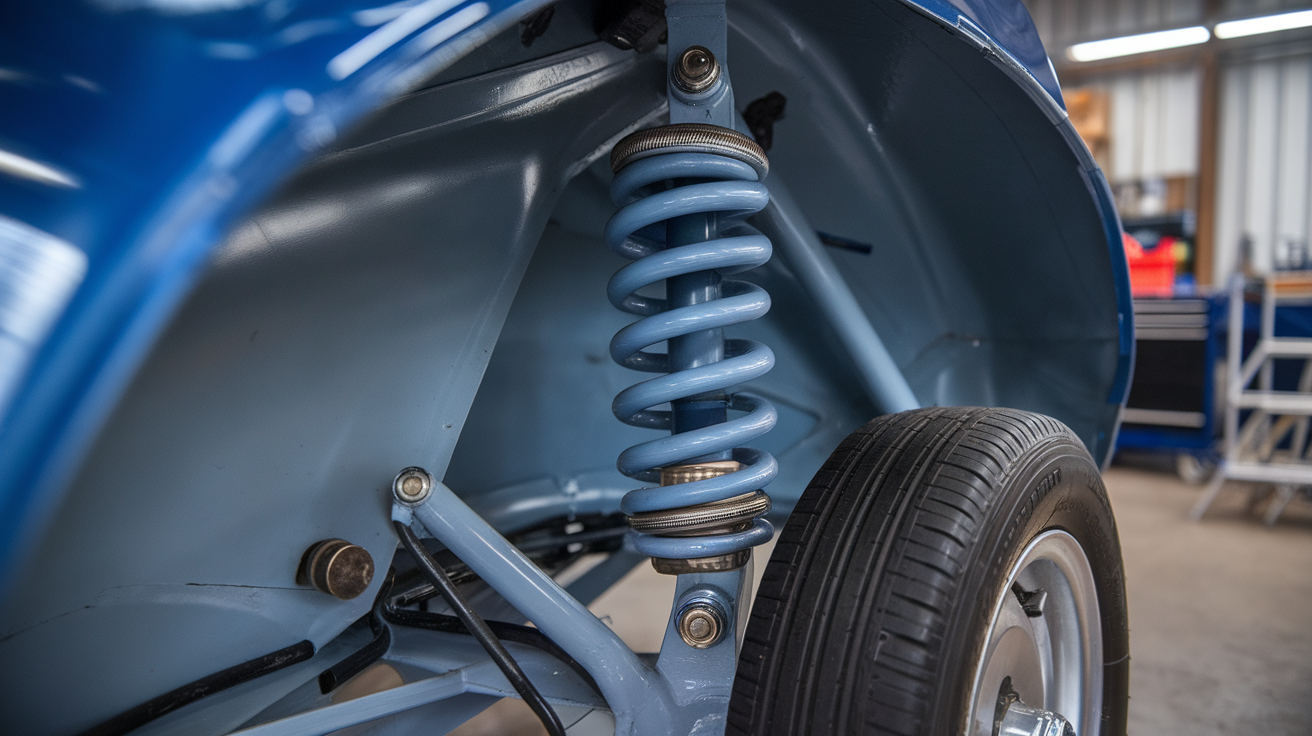
Smart Ways to Keep Your TPMS Sensors Working in UAE
Sensors don’t last forever, especially not under Dubai’s sun. But with a few smart habits, you can stop issues before they start. These aren’t just tips; they’re lessons learned from actual tyre failures, workshop headaches, and countless rescans that could’ve been avoided.
- Scan Sensors During Tyre Changes
Don’t wait for the warning light. Ask your garage to run a full TPMS scan when tyres are being replaced or rotated. Most quality garages use TPMS tools for tyre inspection that instantly detect weak or outdated sensors. - Avoid Extreme Parking Heat
Repeatedly parking on black asphalt in open sun? It cooks the sensors. If you’ve got a shaded spot or basement parking, even half the day,it can reduce sensor stress and battery drain. - Replace All When One Fails
If one sensor’s gone bad, the others are probably close behind. Replacing all four might cost a little more now, but it saves workshop time and repeat inspection charges later. - Watch for Delayed Alerts
Sometimes the dashboard light shows up minutes after a pressure drop. That delay is a failing sensor. A quick scan with a tyre pressure tool shows the response time for each sensor before it becomes a blind spot. - Avoid Water Spray on Valves
High-pressure car washes can push moisture into the valve stem and short out the sensor inside. When rinsing, spray the tyre,not the stem. - Create a 90-Day Pressure Routine
Don’t just wait for trouble. Use TPMS tools for tyre inspection every 90 days to scan sensor health and catch pressure issues before they become expensive. One scan takes 2 minutes and can save hours in the garage.
Even with smart TPMS tools for tyre inspection, the system isn’t plug-and-forget; it needs routine checks to stay accurate in this heat. With the right TPMS tools for tyre inspection and a few good habits, you’ll avoid last-minute failures and keep your car road-safe, even in Dubai’s toughest weather.
Most of us only think about tire pressure when that warning light shows up. But by the time it does, the damage might already be done. In a place like Dubai, where road temps can melt flip-flops, your tires, and those little sensors inside, are working overtime.
Using proper TPMS tools for tyre inspection is not about being fancy. It’s about staying ahead. One quick scan could catch a slow leak, a dying sensor, or a wrong pressure reading before it turns into a blowout at 120 km/h on Sheikh Zayed Road.
So here’s the move: Don’t wait for the warning. Come in for a quick TPMS check using proper TPMS tools for tyre inspection. We’ll scan your sensors, give you real-time data, and let you know if something’s off before it turns into trouble on the road. Peace of mind takes five minutes. Let’s make sure your tyres have your back.

